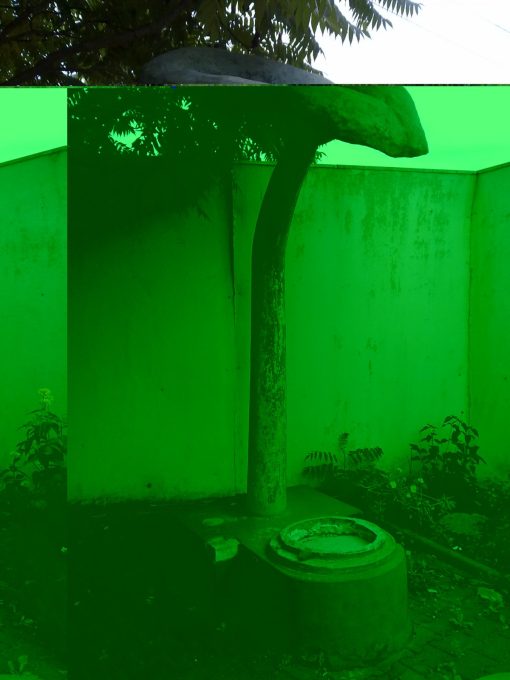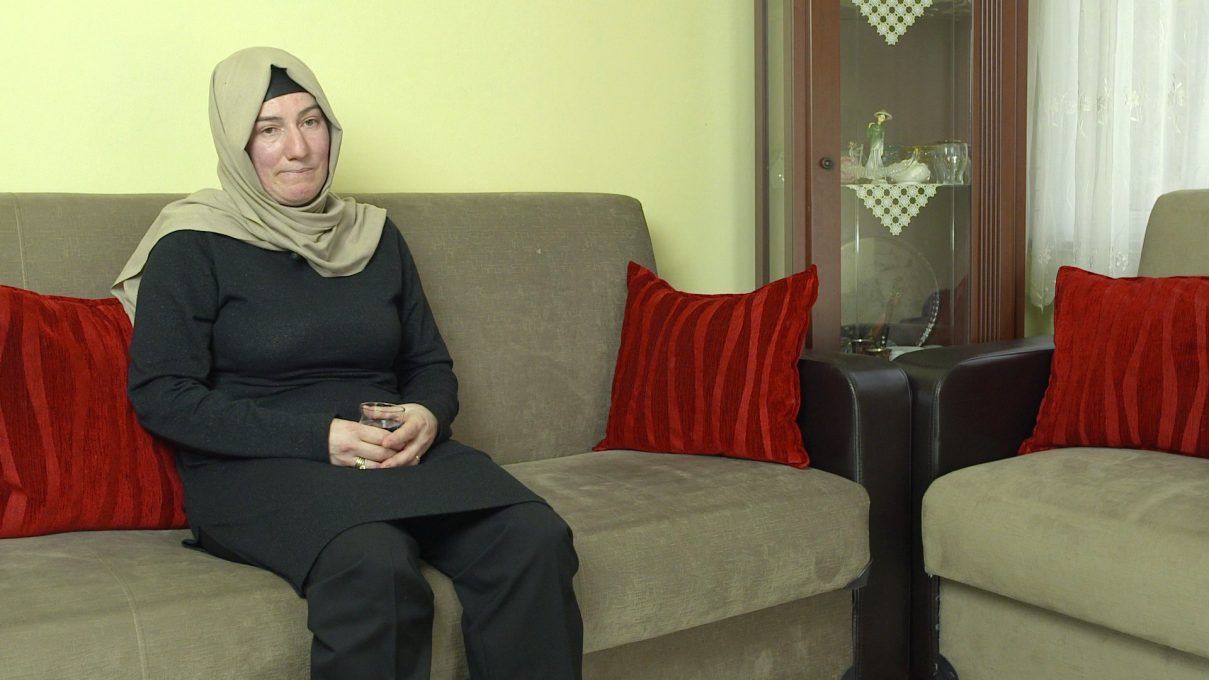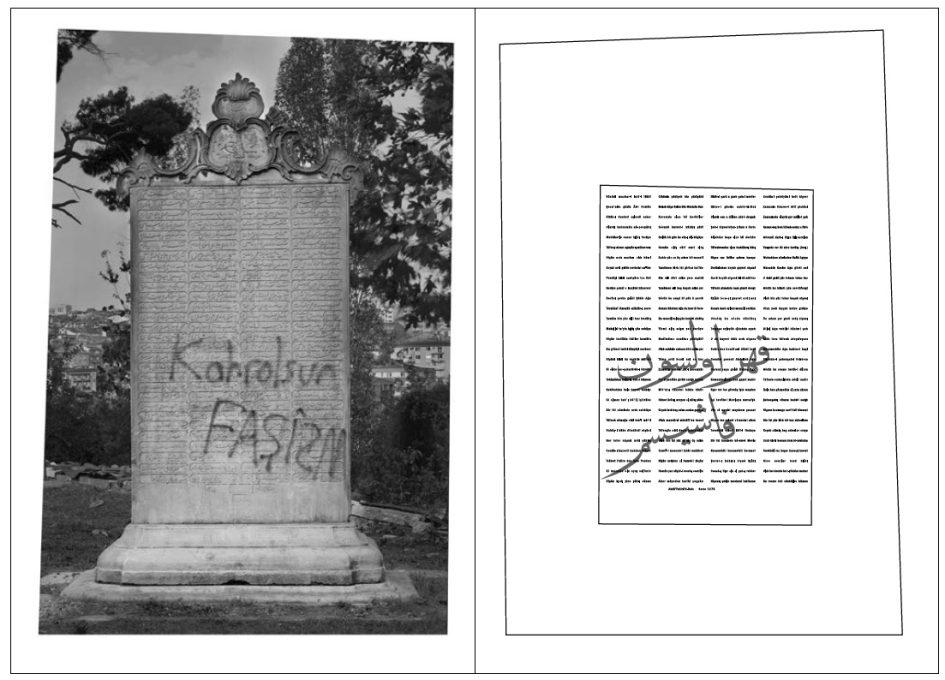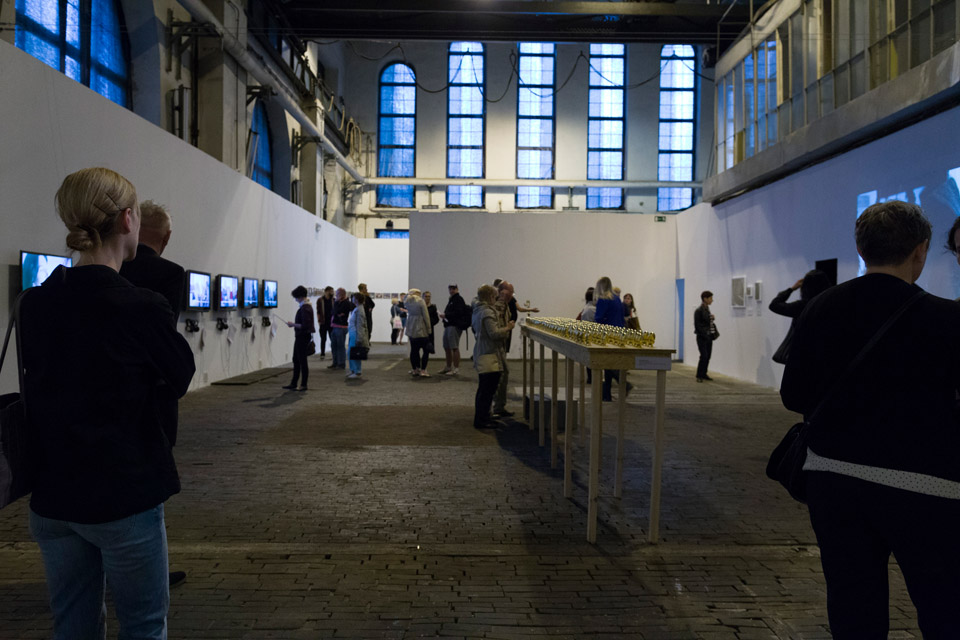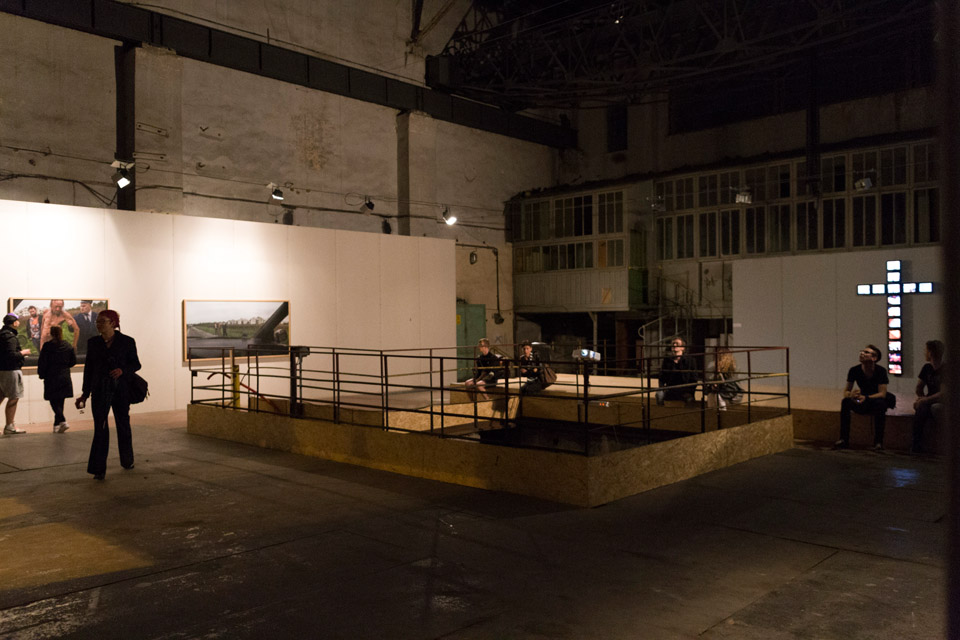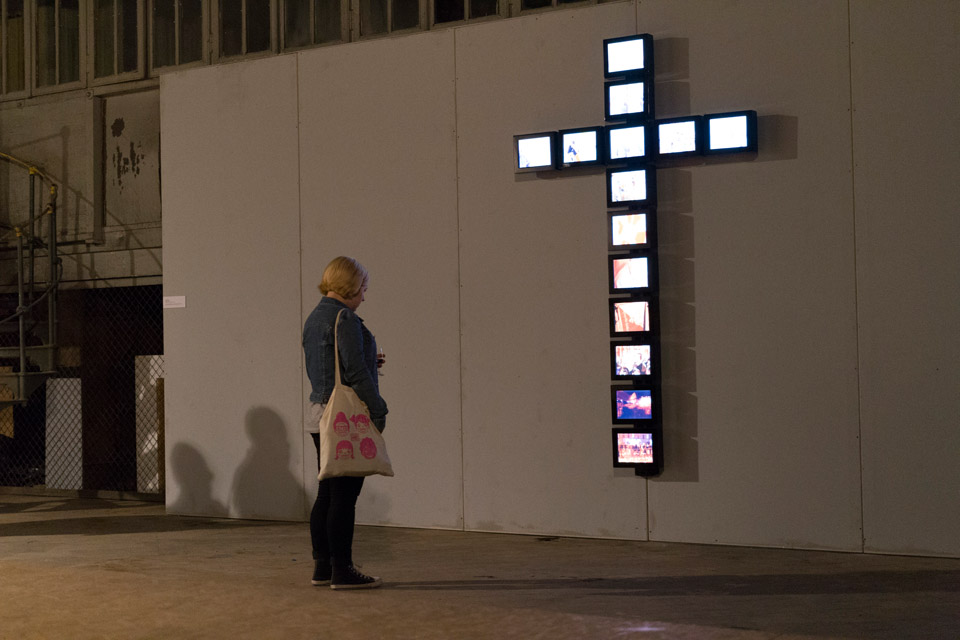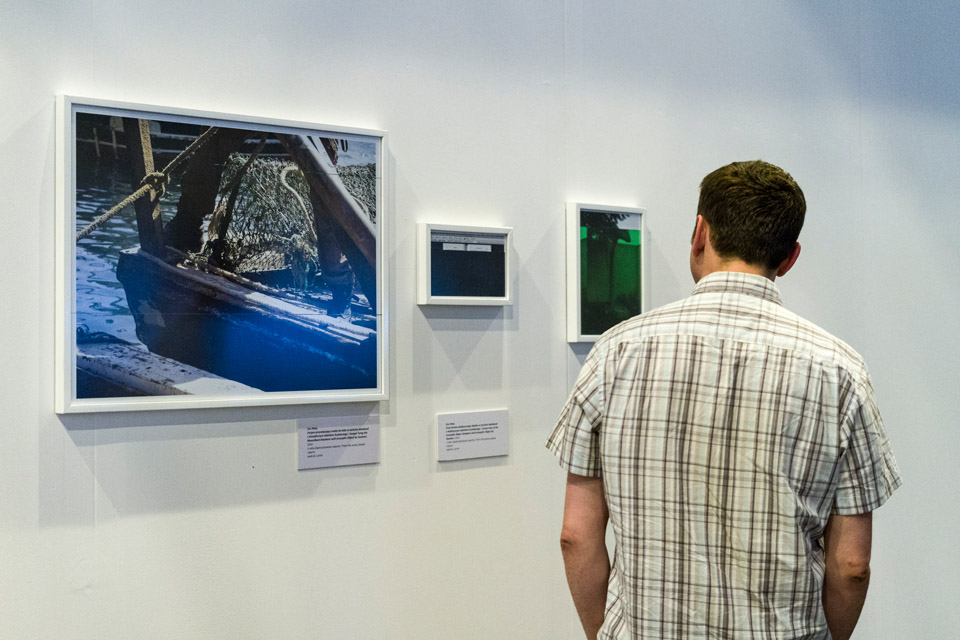The Oxymoron of Normality
The Oxymoron of Normality that is „We are Europeans, but perhaps not in a full sense”
An exhibition will be presented from 13 June – 10 August 2014 in Galeria Arsenal power station in Bialystok (Poland).
Participating artists from Poland and Turkey: Can Altay, Fatma Bucak, Hera Büyüktaşcıyan, Hubert Czerepok, Oskar Dawicki, Anna Konik, Franciszek Orlowski, Jadwiga Sawicka, Konrad Smolenski, Ali Taptik, Marek Wasilewski, works from the collection of Galeria Arsenal by: Piotr Wysocki, Zbigniew Libera.
This exhibition is directly inspired by the work of Alexander Kiossev (Notes on Self-Colonising Cultures, B.Pejic, D.Elliot (red) After the Wall. Art and Culture in post-Communist Europe, Stockholm 1999) regarding the condition of East-Central European and the Balkan countries. The suggestion to look for the sources of their problems with self-definition and discovering their identity further than the simple lack of continuity in the democratic process, caused by the communist era, seems particularly interesting. Kiossev calls such countries “self-colonizing cultures”, emphasizing the fact that this colonization is in a way “voluntary” and happens without any external force. We cannot identify with values which we consider Universal, but we also cannot reject them in favour of our own values. We try to cope with this in various ways; either by constant comparisons and applying the “normality” measure and asking when “when will it be normal in here” meaning the way it is THERE; or by repressing and rejecting the obvious notion of the marginality of Polish culture, pretending to be a part of the Universe and assuming that we have a special role in shaping the European culture, by over-emphasizing own values, unjustly forgotten culture standards and finally by looking for those guilty of “doing it to us” by falsifying the history. In any case we consistently avoid facing the fact that our culture has not become inferior because it became dependant on alien elements, but at its very core it has been constituted as dependant because of realizing its own inferiority. That would allow us to replace the “normal-pathology” opposition with “central-peripheral” and would allow us to accept our condition.
Monika Szewczyk
The flaws in normality
Normality appears to present no problems. It is seemingly simple and easy to define. An overwhelming majority of current dictionaries and popular encyclopaedias defines it as the state of being correct, as functioning according to the commonly accepted laws or, ultimately, as the state of physical and mental health. Yet a deeper reflection on the issue of normality provokes many questions and doubts, beginning with what fits in the boundaries of the norm and what “being normal” actually means and involves. Apart from the fact that the “norm” is revealed as a relative concept, since the markers of it are different in every cultural circle, constructing its substantial definition proves impossible. The term ‘normal’ shall be attached (imprecisely, in the essence) to any person whose behaviour, status, health and social condition do not diverge significantly from the average. In fact, the paradoxical character of this definition is immediately noticeable. A similar line of reasoning, involving the perception of the frequently occurring forms of social behaviour as normal, has led the French sociologist Emil Durkheim to the recognition of criminal acts as normal, since they occur in every community.[1]
The state of normality, like the state of healthiness, is a purely theoretical model. In fact, the concepts of norm and normality are well-rooted in medical discourse, especially that of psychiatry and the related field of clinical psychology. They were accepted as medical terms in the early years of the 19th century; but it was not the norm, but the divergence from it, pathology, that was crucial to the medical profession at that time. The French doctor and professor of general pathology François-Joseph-Victor Broussais introduced the concept into the medical nomenclature and caused it to be recognised on a larger scale, while the French philosopher Auguste Comte adapted it to the needs of the social studies. Pathology, aberration and unnaturalness were placed on the opposite end of the spectrum from normality, and thus they became its reflection – a symmetrical phenomenon and an element of conceptual apparatus used to construct its definition. This was because normality is far easier to define by means of negative terms and formulas, pointing to the sphere of phenomena that do not fit into it. Thus normality is viewed as a phenomenon of a postulational nature, and the striving towards it as an endeavour to attain a desired state which, on the conceptual level, may even possess the characteristics of a utopia.
The Bulgarian historian Aleksander Kiossev pointed out that “normality” had been one of the key words used in political discourse in the former Communist countries in the period when their future was being decided.[2] The wish-fulfilment nature of this state as a desired condition, different than the current one but none too precisely defined, was forcefully revealed. A comparison with the clearly defined rules imposed on a society operating in the realities of the Communist regime makes it especially evident how fluid was the assessment of what the new normality was actually supposed to be. In her analysis of normality in the Communist countries, Dana Koleva defined it as the area in which norms set by ideology are aligned with those arising from the practice of social life.[3] In the situation of such “normality” no alternatives are available, the centralised power structure finds no counterbalance in the civic society, instead extending its control over the individual by determining that individual’s needs and capabilities. The margin of institutionally accepted divergence is narrow, and the program itself can be carried out only because individuals actually enter into the social roles that had been designed for them. One facet of that “return to normality” postulated in the periods of changes was the idea of entering into new civic roles (or returning to the old ones, the continuity of which was interrupted by the years of subjugation), of organising institutional life anew and bringing the normal state back.[4] These postulates were accompanied by a bid for a “return to Europe”; the western neighbour, separated from the Eastern bloc by the iron curtain, provided the reference point for normality. The way of perceiving normality in Eastern Europe was clearly conditioned by social unrest, chaos in public administration and instability of both the collective and individual identity. The desired and expected state of normality had a conceptual and symbolic dimension; it was based on the framework of the slightly naïve ideas of freedom, truth and justice. As pointed out in Kiossev’s argumentation, for many countries of the former Easter bloc accession to the European Union was a stage in the process of entering into normality; yet, as it turned out, the perceptions of Europe/normality often collided with the realities of the European social and economic policies.
The vision of normality identified with the Old Continent is present in both the Polish and the Turkish experience. In the case of Poland, it was associated first with the longing for the world on the other side of the iron curtain, then with the accession to the EU, and finally with the attempts to define Polish identity in the context of the economic, societal and cultural achievements of the Old Europe. Political debates surrounding Turkey’s accession to the EU are still heated, while episodes of searching for a reference point in Western Europe had already occurred in this country in much earlier periods. This point has been suggestively presented by Orhan Pamuk in one of his essays, where he described Europe as an imagined area, as much of a threat as a target and a model of life to be attained.[5]
Yet the idea of normality adopted in the exhibition which is to represent an insight into the social condition and realities is not limited to the political dimension, the many aspects of which have been so perceptively analysed by Kiossev in his texts. Some artists analyse social problems arising from economic or cultural policies of both countries. Other works, however, focus on the investigation of such fundamental issues as evil, national myths or the collective and individual identity. The phrase “oxymoron of normality” adopted as the title of the exhibition refers to the title of Kiossev’s text, yet already in its collocation, grammar, and above all its semantics it constitutes an aberration. In the essence, it means nothing; it carries no coherent message. The essence of a rhetorical figure constructed from words having opposite meanings is perfectly reflected in the Greek root of the word ‘oxymoron’: oxys (sharp) and moros (blunt). An oxymoron, based on a semantic contradiction, is not at all distant from a paradox, which is contradictory regarding both meaning and logic.[6] Its cognitive function has often been pointed out; it is supposed to facilitate the discovery of complicated meanings, to reveal hidden contents and to lay bare the dialectic complexity of states and phenomena.[7] Re-evaluation of original senses of words constituting an oxymoron causes the contradiction contained therein to lose its force, and so makes it possible to discover new qualities in the semantics of the juxtaposition. Speaking of an oxymoron – and, in the context of the exhibition, of the oxymorons of normality – we focus on the observation of phenomena that undermine and erode this purely postulational state of homeostasis. The works presented at the exhibition, some of which are actually constructed around the contradiction typical to an oxymoron and/or paradox, reveal the aberrations of reality and disclose its pathologies, and thus they build an oxymoronic image of the world that surrounds us.
Izabela Kopania
translated from Polish by Klaudyna Michałowicz
[1]E. Durkheim, The Rules of the Sociological Method, ed. by S. Lukas, New York 2013, pp. 50–100.
[2]A. Kiossev, The Oxymoron of Normality, online text at http://www.eurozine.com/articles/2008-01-04-kiossev-en.html (accessed May 15, 2014).
[3]D. Koleva, Socialist Normality: Euphemization of Power or Profanation of Power?, in: Negotiating Normality: Everyday Lives in Socialist Institutions, ed. by D. Koleva, New Jersey 2012, p. XIV.
[4]A. Kiossev, op. cit.
[5]O. Pamuk, Where is Europe? in: idem, Other Colours. Writings on Life, Art, Books and Cities, London 2007, pp. 189–192.
[6]L. Banowska, Paradoks poetycki i formy pokrewne jako tworzywo literackie, “Pamiętnik literacki”, XCII, 2001, fasc. 2, pp. 169–171.
[7] W. Chlebda, Oksymoron versusoksymoron, “Przegląd humanistyczny”, 1984, no. 4, pp. 131–139.
Media Patrons:

Can Altay

PLAN YOUR VISIT
Opening times:
Thuesday – Sunday
10:00-18:00
Last admission
to exhibition is at:
17.30
